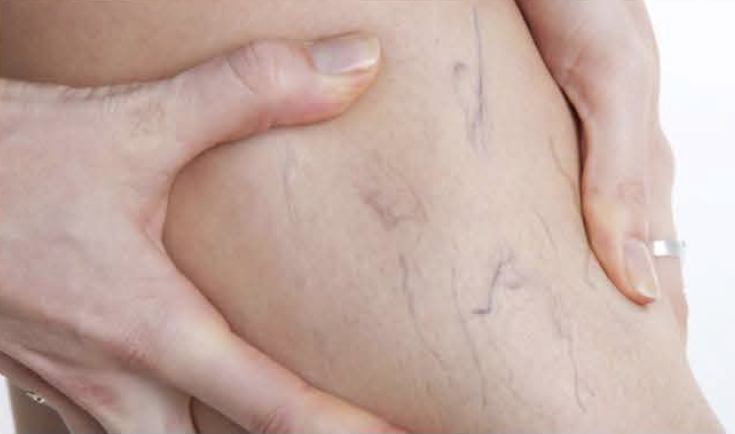Spider Veins
Spider veins also referred to as telangiectasias or teticular veins, are clusters of dilated, tiny blood vessels that develop close to the surface of the skin. they are often red, blue, or purple, and may have the appearance of a spiderweb. They are commonly found on the face and legs. Unlike varicose veins, spider veins are harmless and usually do hot have much a medical consequence, but they can cause some discomfort and be unsightly.

What causes spider veins? Learn More Close
The same risk factors that put you at risk for varicose veins will put you at risk for developing spider veins. These include:
- GeneticsProlonged standing/sittingObesity
- Hormonal Influences
- A history of blood clots
- Age
How are spider veins diagnosed? Learn More Close
These veins are diagnosed with a simple, thorough physical examination of the skin.
How are spider veins treated? Learn More Close
Spider veins are treated through these options:
Injection Sclerotherapy Learn More Close
Injection sclerotherapy a sclerosant (irritating solution) is injected into the affected veins. The injection irritates the inside of the vein and over time, the vein will shrink and disappear. If you have multiple spider veins, the treatment will require multiple injections to collapse all the veins. Bright light and magnification may be used to ensure maximum precision while injecting the sclerosing solution.
Laser Therapy Learn More Close
Laser therapy is an intense beam of light is directed at the spider vein, which obliterates it through the skin. More than one laser session may be needed to obtain the desired results. Sometimes laser therapy is used in combination with injection sclerotherapy.
How can I prevent spider veins? Learn More Close
- Avoid prolonged standing/sitting
- Exercise regularly
- Maintain a healthy weight
- Compression socks
- Elevate legs when resting

